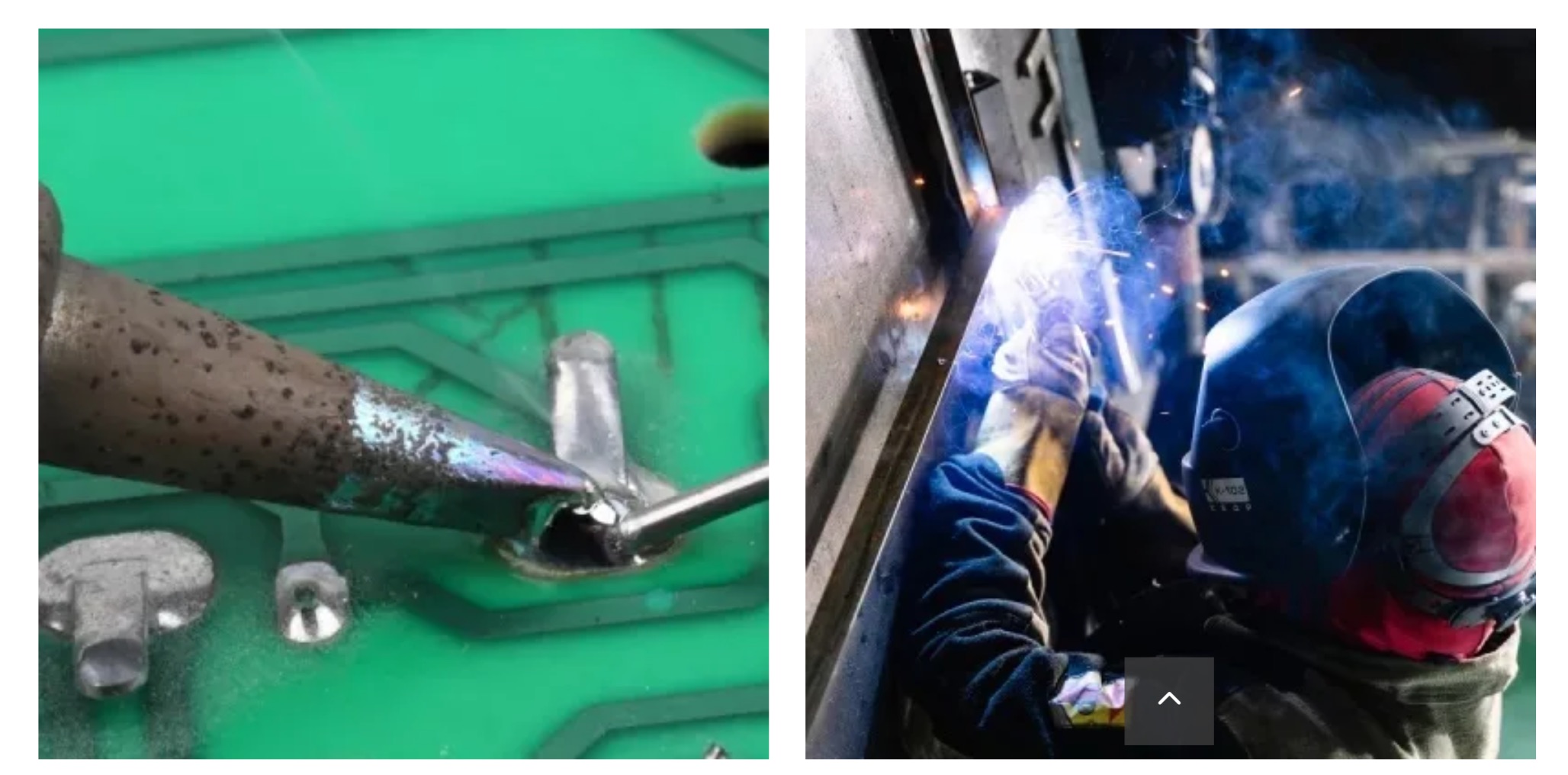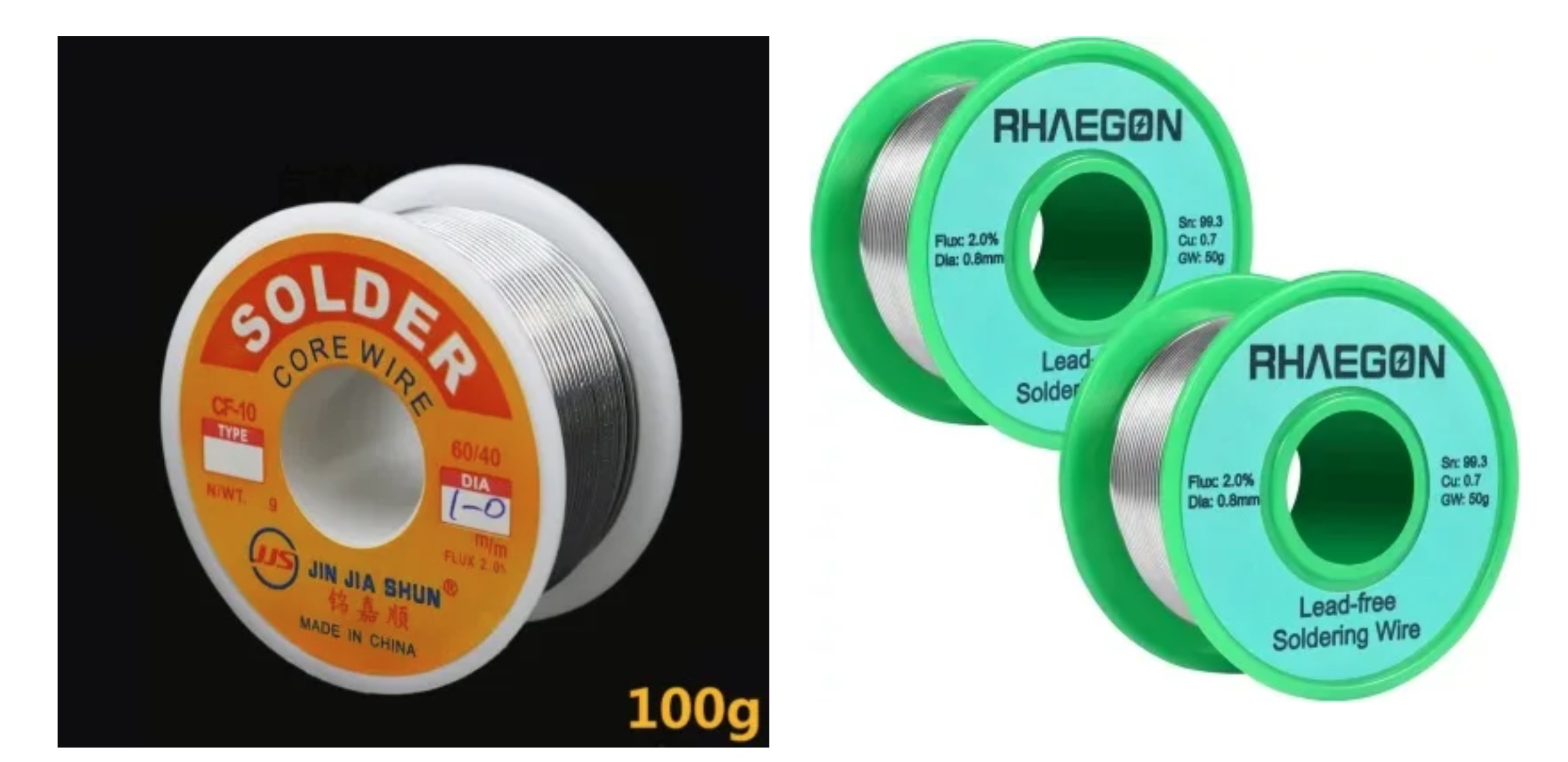

Soldering is the act of melting metal to bond two different parts together; however, soldering is not the same as welding despite their similarities. In welding, the parts being bonded are also melted along with the feed material, but in soldering, only the feed material melts.

Soldering is the primary method for attaching components to PCBs thanks to the simplicity of soldering, the ability to do it on a large scale, and its relatively low cost. At the same time, a solder joint provides a chemical bond between two parts, which offers a great deal of mechanical strength and electrical conductivity.
At the start of the electronics industry many decades ago, hand soldering was the dominant form of soldering, but as PCBs became more complex, the introduction of wave soldering (whereby a board is moved over a “waterfall” of molten solder), allowed for boards to be soldered in seconds instead of hours. As components began to shrink in size and become surface mounted, the combination of automated pick and place along with hot-air soldering allowed entire PCBs to be made entirely by machine, with no human intervention whatsoever.

Of course, some components still require to be hand-soldered, even in modern devices, and these are generally large through-hole component such as capacitors, inductors, transformers, and connectors. Hand soldering is also massively common amongst engineers making prototypes as well as makers looking to turn ideas into reality. In the case of MitchElectronics, all of our kits offer makers an excellent opportunity to test out their soldering capabilities while simultaneously providing a useful circuit.
Traditional solder is made from a 60/40 mix of lead and tin, and this combination was selected due to its low melting temperature of 183°C, the excellent strength offered by this combination compared to its low melting point, and that lead solder melts at this temperature, and not over a range. At the same time, the lead in traditional solder prevents the formation of tin whiskers which can grow from pads and create short circuits.
Modern solder used in the electronics industry for consumer products does not use lead due to the extreme toxicity of lead. Instead, modern solder takes advantage of a mixture of silver and tin, but can also include copper and other trace metals. While this does help to lower the soldering temperature, it is still significantly higher than lead solder, with a typical melting point being 217°C. This higher temperature can make it more difficult for the solder to wet onto surfaces and form a clean bond.Now, it would be a lie to say that lead-free solder is better than lead solder with regards to mechanical, electrical, and reliable characteristics; the truth is that lead-based solders are superior to their greener verities. This is why lead solder is allowed to be used in safety-critical applications, including aerospace, automotive, and even defence.

However, it is highly unlikely that a maker will be developing projects that will have a justification for using lead solder. As such, MitchElectronics absolutely recommends that those soldering electronics at home should only consider the use of lead-free solder. Not only is lead-free solder far safer for makers, but it is safer for the environment as kits that find their way into landfills or lost to the environment will not leak toxic compounds.
Another challenge introduced by lead solder is that while lead boils at a very high temperature (far higher than that of a soldering iron), the fumes from soldering can carry trace amounts of lead and tin. By using lead-free solder, the fumes will not be able to carry extremely toxic lead, but that doesn’t mean you can go sniffing the fumes (you must still have an extractor).
To lead by example, all MitchElectronics kits have lead-free tin plating, and we hope that all makers building our kits will also use lead-free solder.
Next - Selecting Your Tools